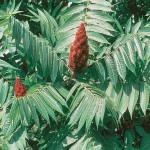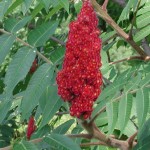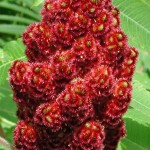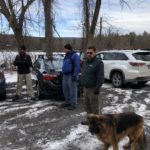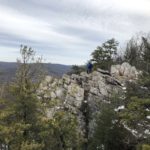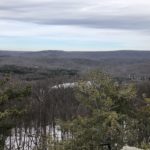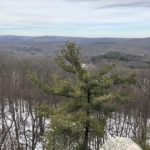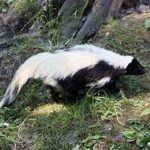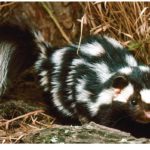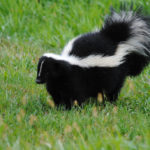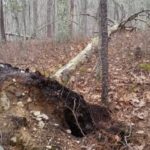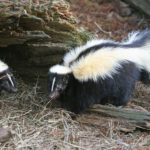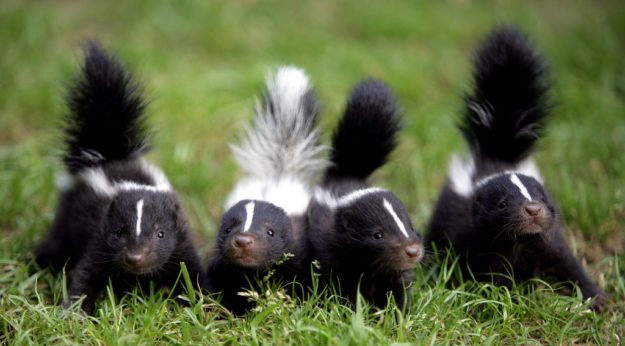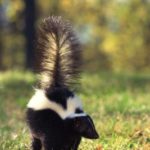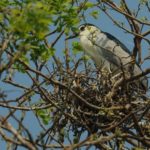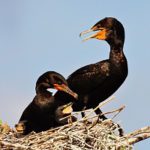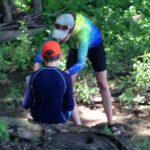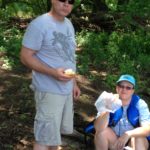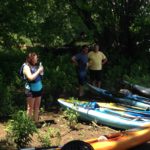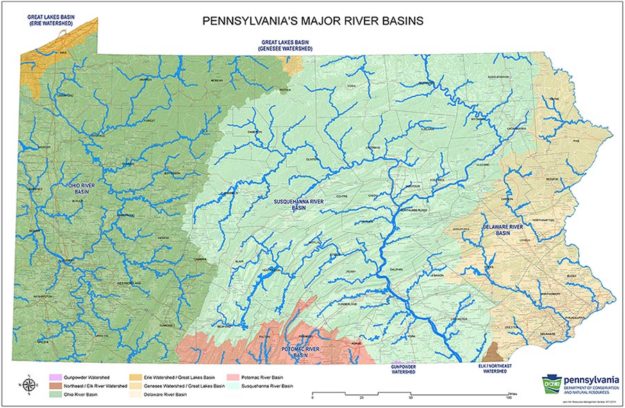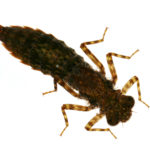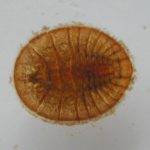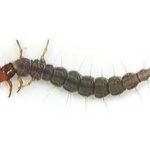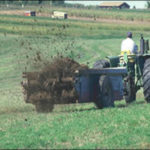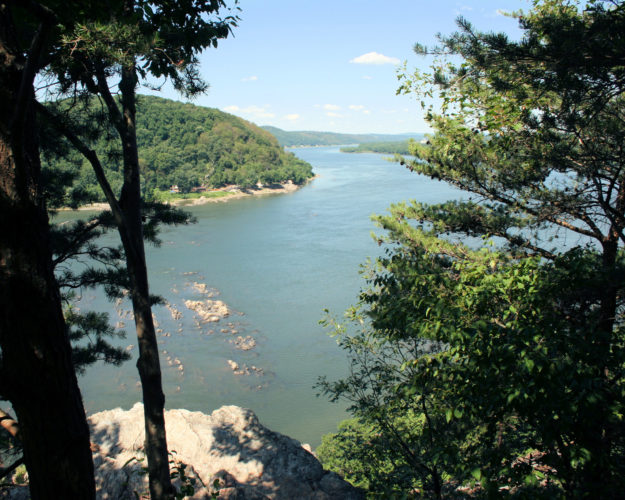 Schedule: Third Saturday of each Month. Time will depend on the hike event for that Saturday. Date may change due to conflicts.
Schedule: Third Saturday of each Month. Time will depend on the hike event for that Saturday. Date may change due to conflicts.
Jan. 20th – Join the DOC at Pine Grove Furnace State Park for an average paced 4.2 mile hike on moderate to strenuous terrain. We will climb up Pole Steeple Trail, take in the view and descend on the
AT, returning to Pole Steeple Trail via the Mountain Creek Trail. If snow is on the ground make sure to wear hiking boots and bring micro spikes or yak tracks if you have them. The theme for discussion will be skunks. Meet at the Geisinger Holy Spirit Duncannon Center at 8:30 or alternately at the RT 114 Park and Ride at 9:00 am. Call 717-395-2462 or email dtakach@duncannonatc.org to register.
Feb. 17th – Come to an average paced 8.5 mile loop hike over easy to moderate terrain at Pinchot State Park. Bring micro spikes or yak tracks depending on the weather. Snow shoes are welcome provided there is snow on the ground. Meet at 8:30 am. at the Geisinger Holy Spirit Duncannon Center or alternately at the Camp Hill Mall/Santander Bank at 9:00 am. We will be learning about voles and moles! Call 717-395-2462 or email dtakach@duncannonatc.org to register.
Mar. 3rd – Come to the Middle Creek Wildlife Management Area and observe the migration of Snow Geese and Tundra Swans as they touch down at this important way station. Then hike an average paced 6 mile hike over moderate to strenuous terrain on a series of trails that form a loop back to the visitor’s center. There are 2 climbs from 300 to 400 ft. Meet at the Geisinger Holy Spirit Duncannon Center at 8:30 am. or alternately at the Kmart parking lot in Summerdale at 9:00 am. Call 717-395-2462 or email dtakach@duncannonatc.org to register. Please reimburse drivers 10 cents per mile and for turnpike tolls (124 miles total). Bring your cameras and binoculars if you have them and pack a lunch.
April 14th – Come to a family/dog friendly, average paced, two mile hike over easy terrain from Scotts Farm to Sherwood Drive and back. We will identify violets along the way and learn how to make violet syrup. Meet at the Geisinger Holy Spirit Duncannon Center at 9:00 or alternately at Route 114 Park and Ride at 9:30 am. Call 717-395-2462 or email dtakach@duncannonatc.org to register.
May 19th– Come to a dog friendly, average paced 6 mile loop hike on moderate terrain from RT 850 AT trailhead to Darlington Trail to Miller’s Gap Road back to 850. We will learn about dogs, what to do if attacked, dogs and hiking, etc. Meet at the State Game Lands 170 parking lot along 850 at 9:00 am. Call 717-395-2462 or email dtakach@duncannonatc.org to register and for directions if needed.
June 23rd – Join the DOC on a canoe/kayak trip from Blue Mountain Outfitters (BMO) to West Fairview for an opportunity to observe the nesting birds on Wade Island and learn about the biodiversity of the Susquehanna. Cost is $12.50 if you bring your own boat. Rent a kayak for $45.00 plus a $7.50 shuttle fee, a two man kayak for $65.00 plus $7.50 each person, a canoe for $45.00 plus $7.50 each person. Tax is not included in these figures. Call 717-395-2462 or email dtakach@duncannonatc.org to register. We will meet at the Geisinger Holy Spirit Duncannon Center to carpool at 9:00 am. or alternately at BMO at 9:30 am.
July 21st – Join us for an average paced 6 mile hike over moderate to strenuous terrain starting at the AT RT 850 trailhead to Scotts Farm. The theme will be Daylilies. Meet at the Geisinger Holy Spirit Duncannon Center to carpool at 9:00 am. or alternately at RT 114 Park and Ride at 9:30 am. Due to limited parking, if there are a large number of cars we will drop some cars off at Scotts Farm and then carpool to the AT RT 850 trailhead. Call 717-395-2462 or email dtakach@duncannonatc.org to register.
Aug. 18th –Join us for an average paced 9.6 mile hike over moderate terrain from the AT RT 225 trail head to the RT 325 trailhead. The hike follows the ridge of Peter’s Mountain and has 3 nice views. At the beginning of the hike we will be making a delicious drink out of Sumac Berries and learn the difference between Staghorn Sumac and Poison Sumac. Meet at the Geisinger Holy Spirit Duncannon Center at 9:00 or alternately at the AT parking at the RT 325 trailhead/Clarks Valley Rd (40.451386,-76.776430) at 9:30 am. Bring water and a lunch. Call 717-395-2462 or email dtakach@duncannonatc.org to register.
Sept. 15th – Hike an average pace 2 mile loop hike over moderate terrain as we bushwhack through the Takach Property in search of galls. This is a kid friendly/family friendly hike. Meet at the Geisinger Holy Spirit Duncannon Center at 9:00 am. to carpool. Call 717-395-2462 or email dtakach@duncannonatc.org to register.
Oct. 20th – Join the DOC for a 5 mile average paced, shuttle hike on moderate to strenuous terrain up the Canyon Vista Trail at Worlds End State Park to a beautiful vista onto Link Trail following a creek down to the park office. This is a difficult hike with steep sections. Pack lunch, snacks, and water. Wear orange. Meet at the Giesinger Holy Spirit Duncannon Center to carpool at 8:00 am. Driving distance is approximately 196 miles total. Please pay drivers 10 cents per mile for gas. Call 717-395-2462 or email dtakach@duncannonatc.org to register.
Nov. 17th – Want to learn how to identify trees. Come out for a 2 mile average paced hike over easy terrain off RT 325 on state game lands. Be sure to wear orange! Meet at the Geisinger Holy Spirit Duncannon Center at 9:00 am. to carpool or alternately at the intersection of RT 225 and RT 325 parking area (40.38867,-76.94168) at 9:30 am. Call Paul at 717-648-8226 or email psmith@duncannonatc.org to register.
Dec. 15th – Come to Little Buffalo State Park for an average paced 5 mile hike over moderate and strenuous terrain. There are approximately 8 short climbs and one big one. This hike is not for beginners. Learn about where animals go in winter. Meet at the Geisinger Holy Spirit Duncannon Center at 9:00 am. to carpool or alternately at Little Buffalo Park Office at 9:30 am. Call 717- 395-2462 or email dtakach@duncannonatc.org to register.


